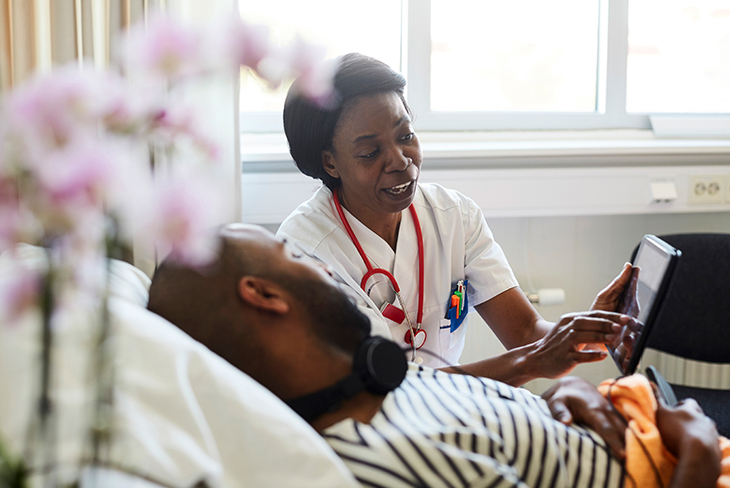Newly diagnosed with chronic kidney disease

Chronic kidney disease is a life sentence, not a death sentence. Here’s what you need to know if you’ve been diagnosed with this disease.
Dr Mathews Thomas, resident nephrologist at the Life Renal Dialysis unit at Life Robinson Private Hospital, explains that kidneys have four fundamental functions.
‘Firstly, the kidneys maintain normal body fluid composition, keeping tight control of water, sodium, potassium, calcium, phosphate and other substances. The kidneys are also responsible for the excretion of [metabolic waste products], as well as foreign substances, like nitrogenous waste generated in the liver.
‘They also regulate blood pressure; produce the hormone erythropoietin, which acts on red blood cells to protect them against destruction; and stimulate the bone marrow to increase the production of red blood cells.’
Chronic kidney disease (CKD) is diagnosed by the presence of kidney damage or decreased kidney function in a patient.
‘We may diagnose a person with CKD if there has been a structural or functional decline in kidney function for three months or more, irrespective of the cause,’ says Dr Thomas.
CKD is divided into various grades in terms of increasing severity and based on both the measurement of the glomerular filtration rate (GFR) – the rate at which blood is filtered in the kidneys – and the amount of albumin (a protein) in the urine.
What are the causes of chronic kidney disease?
Dr Thomas says that the causes vary. According to the most recent study, completed in 2017:
- 31.9% of persons had unknown causes;
- 31.1% of persons had hypertension;
- 15.3% had diabetes;
- 10.3% had glomerular disease;
- 3% had renal cysts; and
- 1.85% suffered from obstruction and reflux issues.
Out of these persons, 86.5% received haemodialysis, 13.5% received peritoneal dialysis and 17.3% were candidates for transplants, he explains.
CKD by the numbers
The five grades of CKD are determined by two elements, the GFR and albumin excretion:
- Grade 1, GFR is more than or equal to 90ml/min/1.73m2
- Grade 2 – 60–89ml/min/1.73m2
- Grade 3a – 45–59ml/min/1.73m2
- Grade 3b – 30–44ml/min/1.73m2
- Grade 4 – 15–29ml/min/1.73m2
- Grade 5 – less than 15ml/min/1.73m2
In Grade 1, there are usually no symptoms to indicate kidney disease. Grade 1 CKD is likely to come up when a person is tested for another health condition, like diabetes or high blood pressure, which are the two leading causes of kidney disease.
Grade 5 marks end-stage renal disease (ESRD), with the kidneys having lost nearly all their ability to do their job effectively. The treatment options for a Grade 5 kidney failure will include dialysis or a kidney transplant.
Alongside that, the albumin excretion is measured in three stages:
- A1 is less than 30mg/g
- A2 is more than 30 but less than 300mg/g
- A3 is more than 300mg/g
Blood pressure monitoring is extremely important and blood pressure should be maintained within the normal parameters as this directly affects the progression of kidney disease. In addition, diabetic control is vital and salt intake should be less than 2g per day to delay the CKD progression timeline.
What happens if you are diagnosed with kidney disease?
‘Getting persons involved in their treatment is vital,’ says Dr Thomas. ‘They really need to be at the heart of the multidisciplinary team, which helps them manage CKD. The multidisciplinary team includes nurses, dietitians, social workers, pharmacists and nephrologists, and plays a vital role in terms of education to persons and their families.’
He says that an educated person is a compliant patient. Information can go a long way towards helping to gain control of the situation.
Download our decision tree to find out the steps to take if you or a loved one has been diagnosed.
‘The multidisciplinary team needs to explain the functions of the kidney and how those relate to their specific diagnosis. Explaining what normal kidney function looks like and showing how the patient’s kidneys aren’t working efficiently can help them understand the state of their kidneys and what that means for their ongoing care and treatment.’

